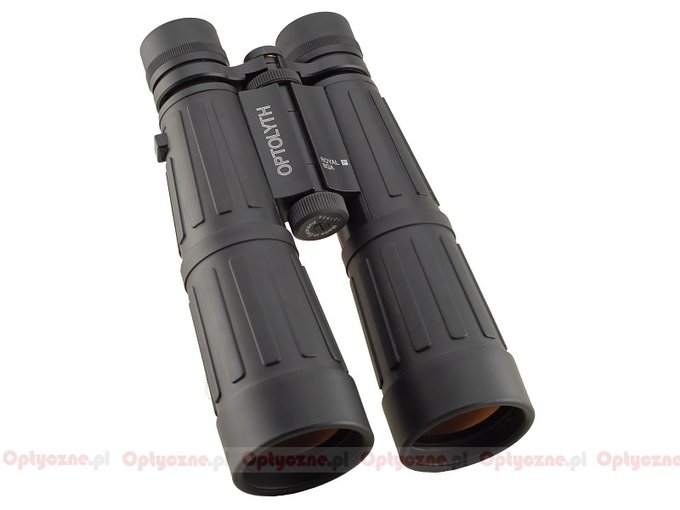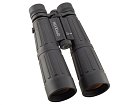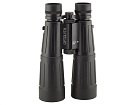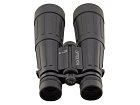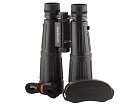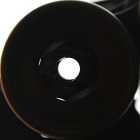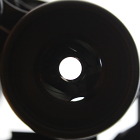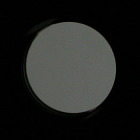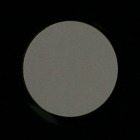Optolyth Royal 8x56 BGA
All Royal binoculars are equipped with phase-coated roof prisms of the Abbe-Koenig system, based on total internal reflection phenomenon. That fact, along with modern antireflection coatings is supposed to provide binoculars with a very high transmission level in the whole visible spectrum.
The Royal 8x56 BGA sports an aluminum body with rubber armour. The binoculars are waterproof and filled with nitrogen; the producer gives an impressive, 30 –year-long guarantee.
| Magnification | Lens diameter | Angular field of view | Prisms | Eye relief | Weight | Price |
|---|---|---|---|---|---|---|
| 8 | 56 | 110/1000(6.3o) | BaK-4/roof | ? mm | 1070 g | 2999 PLN |
Summary
Pros:
- high transmission,
- interesting barrel - in the old style but solid in the same time,
- low astigmatism,
- slight coma,
- sharp image in the bigger part of the field of view,
- slight light fall-off at the edge,
- good white reproduction,
- quite good blackening and inner tubes cleanliness,
- high class Abbe-Koenig prisms,
- very good anti-reflective coatings,
- long guarantee period.
Cons:
- exit pupils truncated and egg-shaped,
- distortion a bit too high,
- the exit pupils vicinity not very nice,
- not many standard accessories.
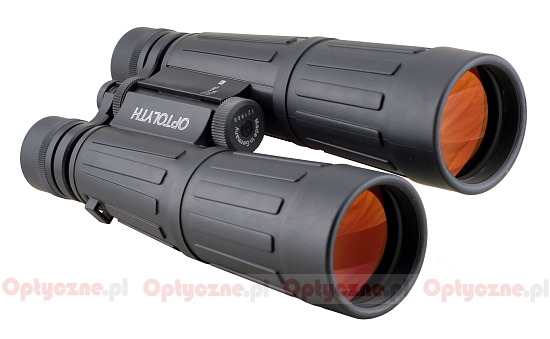 |
One look at the picture below doesn’t left any doubt about the source the Optolyth Royal constructors used. They decided to focus a bit more on the modernity, though - we have here a bit different ocular bridge and there is no central tube. The barrel itself, in contrast to the classic Zeiss Dialyt, is waterproof and nitrogen-filled. Although both binoculars, presented in the photo, have Abbe-Koenig prisms and achromatic objective lenses they can differ slightly when it comes to the ocular construction; however, it is possible that in both cases we deal with a 3-lens Kellner design.
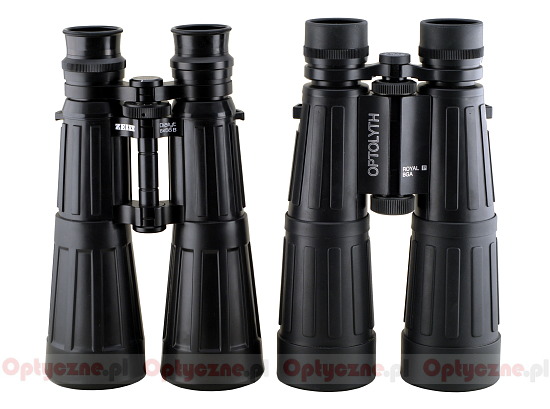 |
The transmission graph of the Optolyth looks nice. Near the 600 nm wavelength so for orange light the binoculars let pass as much as 93% of light. The average value for the visible spectrum centre amounts to 89.9% which is a good result. Although when you take into account the fact, that we deal here with Abbe-Koenig prisms where you practically don’t waste any light, the transmission could have been a tad higher.
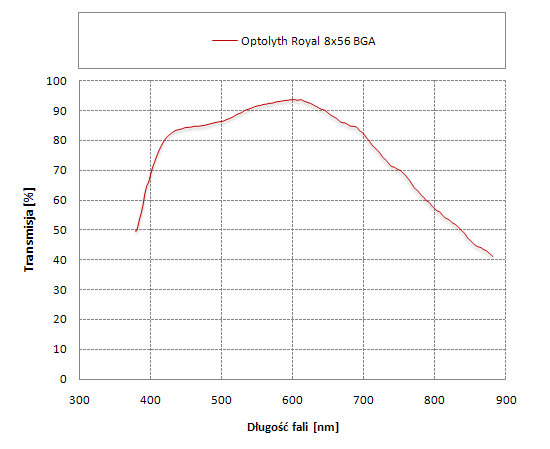 |
Optolyth Royal 8x56 BGA has much more advantages than disadvantages but you can hardly demand less from a pair of binoculars in this price range. We are concerned by the shape of the exit pupils, though. In the equipment of this class they should be ideally circular and their background should be darker. It is not the case here and it might be considered a huge disadvantage. Apart from these things you can hardly carp at anything – you have here a classic look, good materials, good or very good results in most of optical categories and a decent final score. The question is whether you are prepared to pay about 1000 USD for them? Shouldn’t we expect a bit more for such a steep price? I think so, especially that some cheaper binoculars, like a Steiner Ranger 8x56, a Nikon Monarch 8.5x56, a Vixen Ultima 8x56, a Delta Optical Titanium 8x56 or a Minox BL 8x56 BR fared better in our tests.




